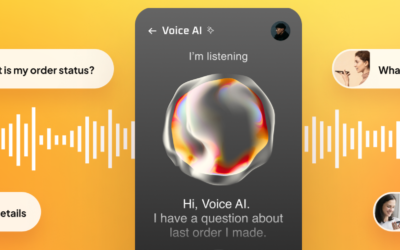As organizations strive to become data-driven, they are looking to gain insights into the effectiveness of various business processes and customer support is no exception. While many companies strive to provide their customers with the best service possible, how can you really be sure whether or not you are doing a good job? Is it possible to quantify all of the work you are doing to meet the needs of your customers? Today we will tell about some of the metrics you need to keep track of to understand how well you are doing and where you need to improve as far as customer support is concerned.
1. Customer Satisfaction Score (CSAT)
The CSAT score is very important because it is a direct indication of whether or not your customers are satisfied with the level of support you are providing. Usually, this data is obtained through surveys following the conclusion of a call or any other interaction with a customer. This can be something as simple as asking the customer how satisfied they were, on a scale of 1-5, with 5 being “very satisfied”. Then what you would do is take the total number of fours and fives you received and divide by the total number of responses. Then, multiply the number you get by 100 to get the CSAT score.
2. Net Promoter Score (NPS)
The net promoter score is used to determine loyalty and how likely your existing customers are to recommend you to their friends. Naturally, if you have a high CSAT score, usually you will also have a high NPS score, but NPS is usually measured on a 10-point scale. Basically, you would ask your customers, on a scale of 1-10, how likely they are to recommend you to someone they know. Anybody who responds with a 9 or a 10 can be classified as a promoter, 7 and 8 are passives and anything below a 7 is detractors. The way you calculate the NPS is to take the percentage of promoters and subtract the percentage of detractors.
3. First Call Resolution Rate (FCR)
Maintaining a consistently high FCR score is important to the overall satisfaction of your customers. The reason for this is because they get their inquiries and issues resolved the first time they call instead of having to contact support repeatedly, get transferred to another agent, and many other issues. So, the way you would calculate the FCR is to take the number of calls or inquiries that were resolved the first time and then divide that by the total number of inquiries that you get. A decent FCR would be something around 70-75%, but you certainly want to get into the 80% rate.
4. Average Handle Time (AHT)
The average handle time is the average amount of time it takes your agents to handle an inquiry or dispute with the customers. This includes not only the number of times agents are communicating with customers and also the time customers speed on hold waiting for your agents to answer their call or chat request. While everybody wants to have a low AHT, it is important that agents don’t push customers off the phone to decrease their AHT, even if it’s part of their responsibility to reduce it. Average handle time shouldn’t typically be too high—it should be optimal for the help that customers need and what the contact center is capable of.
5. Average Resolution Time (ART)
The average resolution time measures how long it takes your agents to resolve open customer tickets. Measuring on a per-agent basis allows you to see who is taking longer to solve tickets. Your Average Resolution Time will vary depending on the complexity of the customer service issue and the ratio of available agents to queued tickets in the measured time frame.
This metric is also referred to as Average Time to Resolution, Average Ticket Resolution Time, and Mean Time To Resolution (MTTR).
Trust Pexly to Help You Improve the Level of Your Customer Support
If you are looking to improve the metrics discussed above or any other ones as well, consider trusting Pexly to assemble an offshore support team with dedicated agents to meet your needs. We have more than eight years of experience actualizing projects of all sizes and experiences and we are confident that we can find a solution that will fit your needs. Contact us today to learn more about how we can help you.



